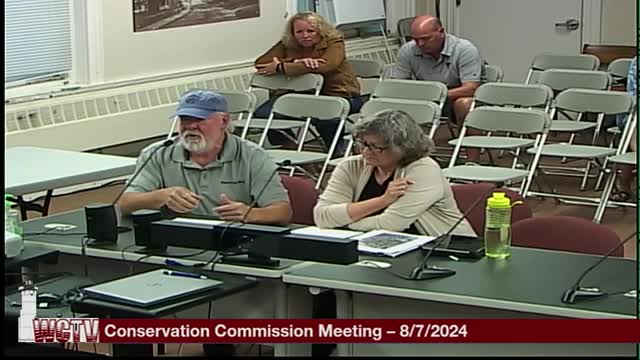Homeowners battle rising seas and bureaucratic hurdles
August 09, 2024 | Town of Wareham, Plymouth County, Massachusetts
This article was created by AI summarizing key points discussed. AI makes mistakes, so for full details and context, please refer to the video of the full meeting. Please report any errors so we can fix them. Report an error »

In a recent government meeting, a resident presented a compelling case regarding the challenges faced in building a home due to environmental changes and regulatory hurdles. The individual detailed their experience with a denitrification system already installed to support both their kennel and home, emphasizing that the construction of their house had been sidelined since 2018 when a family member was diagnosed with cancer.
The resident explained that after submitting a request for an extension on their building conditions, they were met with refusal, compounded by the delays caused by the COVID-19 pandemic. Over the past five to six years, they have observed a significant rise in sea levels, estimating an increase of at least two feet, which has raised concerns about the viability of their original building plans.
The proposed home site is situated near Broad Marsh Creek, which has been designated as a river under the Rivers Act. Despite the resident's belief that their property should not be subject to this regulation—citing historical evidence of a home on the site dating back to the 1960s—they have complied with existing requirements, including maintaining a 200-foot setback from the water.
In light of the rising sea levels, the resident is now seeking to relocate their planned home to a higher elevation, approximately four feet above the original site, while maintaining the same footprint. This adjustment aims to mitigate flood risks and reduce the volume of materials needed for construction, as the foundation would still be elevated significantly above the floodplain.
The discussion highlighted the intersection of personal circumstances, environmental changes, and regulatory frameworks, underscoring the complexities faced by residents in adapting to evolving conditions while navigating bureaucratic processes.
The resident explained that after submitting a request for an extension on their building conditions, they were met with refusal, compounded by the delays caused by the COVID-19 pandemic. Over the past five to six years, they have observed a significant rise in sea levels, estimating an increase of at least two feet, which has raised concerns about the viability of their original building plans.
The proposed home site is situated near Broad Marsh Creek, which has been designated as a river under the Rivers Act. Despite the resident's belief that their property should not be subject to this regulation—citing historical evidence of a home on the site dating back to the 1960s—they have complied with existing requirements, including maintaining a 200-foot setback from the water.
In light of the rising sea levels, the resident is now seeking to relocate their planned home to a higher elevation, approximately four feet above the original site, while maintaining the same footprint. This adjustment aims to mitigate flood risks and reduce the volume of materials needed for construction, as the foundation would still be elevated significantly above the floodplain.
The discussion highlighted the intersection of personal circumstances, environmental changes, and regulatory frameworks, underscoring the complexities faced by residents in adapting to evolving conditions while navigating bureaucratic processes.
View full meeting
This article is based on a recent meeting—watch the full video and explore the complete transcript for deeper insights into the discussion.
View full meeting
